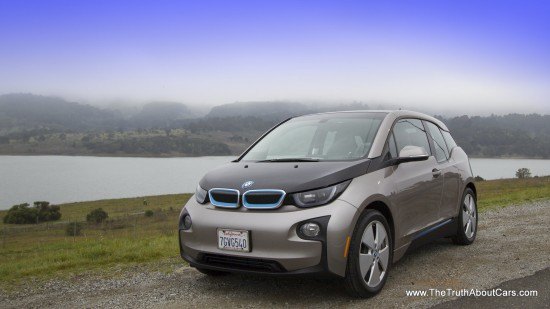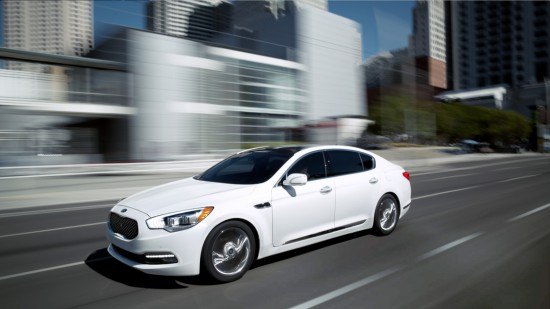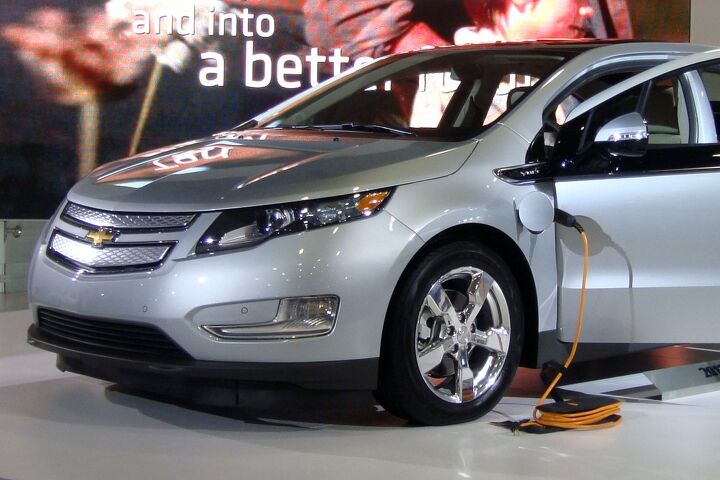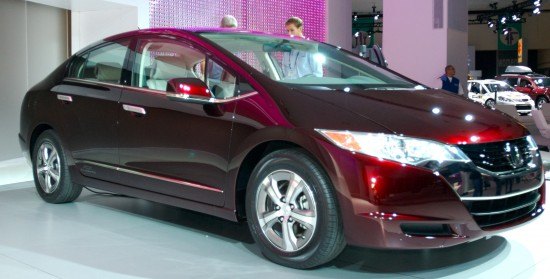#carb
Report: Volkswagen Alone in Cheating So Far, Testing Shows
Increased scrutiny on diesel-powered cars’ emissions hasn’t revealed any other cheating cars beyond Volkswagen’s models, German magazine Wirtschaftswoche reported ( via Reuters).
In an interview with California Air Resources Board Chairwoman Mary Nichols, the German outlet reported that Nichols said Volkswagen appeared to be alone in cheating so far.
“Up until now we have found no fraudulent defeat device in vehicles of other brands,” she told the magazine. “There is nothing that comes close to the magnitude of the excess in VW vehicles. “
Review: 2015 Kia Soul EV (With Video)
EV “conversions” make for strange bedfellows when it comes to competition. There is no gasoline Kia Soul that competed even slightly with Mercedes or BMW. Oddly enough however, when you electrify one of the least expensive cars in America, you end up with with a Kia on the same cross-shop list as the i3 and B-Class Electric. Obviously a Kia Soul EV vs i3 vs B-Class comparison table is at the extreme end, but I am surprised how many folks wanted to hear that comparison. It isn’t just the luxury-cross shops that become possible however, comparisons normally considered to be “one-tier up” and “one-tier down” become more reasonable as well. For instance, the gasoline Soul isn’t a direct competitor to the Fiat 500 or the Ford Focus, but in EV form they are head to head.
Review: 2015 BMW I3 Range Extender Aka I3 REx (With Video)
Some call it a hybrid, some call it an EV. Some have called it a REx, a BEVx, a landmark vehicle in EV production, and others simply call it ugly. One things is for sure however, the 2015 BMW i3 turns more heads in Northern California than a Tesla Model S. Not since I last drove the Jaguar XKR-S have I received as many questions while parked at the gas pump, or visited a gas pump so frequently, but I digress. In a nutshell, the i3 is technically a hybrid or an EV depending on the version you get.
Hyundai, Kia Fined $300M By State, Federal Agencies Over Erroneous Fuel Economy Numbers
Being an asterisk regarding fuel economy numbers isn’t the only penance Hyundai and Kia must pay: The U.S. Department of Justice, the Environmental Protection Agency and the California Air Resources Board dropped a collective $300 million penalty on the South Korean brands for mistating fuel economy numbers on their respective 2011-2013 lineups.
Tesla Leads Sellers of CARB ZEV Credits, Chrysler Biggest Buyer
According to data released by the California Air Resources Board, CARB, Tesla Motors was the top seller of the zero-emission vehicle credits that regulatory board requires car makers to have if they want to sell cars in that state. Toyota was the top seller of hybrid-car credits.
Tesla sold 1,311.52 ZEV credits from Oct. 1, 2012, through Sept. 30 this year. Suzuki Motor Corp., the next biggest seller, transferred about 41 credits. Though Suzuki no longer sells cars in the United States, they still have credits accumulated from prior sales. Toyota transferred 507.5 plug in zero emission vehicle credits generated by its Prius hybrid. General Motors Co. acquired the same number as Toyota sold, so presumably GM bought them from its Japanese rival.
Piston Slap: Fix My Bro-Ham, Sanjeev!
Mark writes:
Hello Sanjeev,
I have a problem and hope you can help me. My Cadillac Brougham with the 307 V8 smells like gas under the hood. This is intermittent and the last time it was in the shop the mechanic found no leaks under the car or around the carb.
Review: 2012 Toyota Prius Plug-In Hybrid
Public beta tests are common in the computer world where a group of fanatics pound your beta to death and help you find the problems. In the automotive world this activity is not only rare, it runs contrary to the cash spent on dressing future cars in swirly vinyl. The Prius plug-in is different. Toyota built 600 demonstrators and sent them to large corporations, Zipcar fleets and, of course the press. Even TTAC was allowed to drive one for a week. What does that have to do with the final product? And how does it stack up against the Volt, Plug-in Fusion and the 2013 Accord Plug-in? Let’s find out.
California Volt Drivers Get Carpool Lane Access
Starting in March, the Chevrolet Volt will be eligible to use the HOV lane on California highways. The catch? You have to buy a new Volt to use the carpool lane.
CARB Wants 15.4 Percent Of New Cars To Be Plug-In, Hydrogen By 2025
CARB has mandated that 15.4 percent of new vehicles sold in California by 2025 must be plug-in, electric or fuel cell powered. The new mandate was supported by major OEMs and could mean as many as 1.4 million zero-emissions vehicles (as well as plug-in cars) on California roads by 2025.
Piston Slap: Playing Super Breakout by Itself?
C.V. writes:
I am a mechanical engineering student looking to learn how to work on cars.
My friend has given me the opportunity to take his 1988 Mazda B2200 extra-cab 5-speed. When I drove it, I saw why. The catalytic converter has broken off, and apparently pieces of it are in the exhaust. Would it be possible to just replace the catalytic converter, or should I replace the whole exhaust?
CARB To Bump ZEV Mandate, Automakers Fight Back
The WSJ [sub] reports
California regulators want zero-emission vehicles—those that don’t run on petroleum—to comprise up to 5.5% of new-car sales in the state, or roughly 81,300, in 2018. The target would rise annually to 14%, or more than 227,600, by 2025…
Tom Cackette, chief deputy executive officer of the California Air Resources Board, says his agency’s goal is to test whether electric cars can become mainstream vehicles, or wind up serving a “niche” market. Mr. Cackette said the state is investing in charging stations and other infrastructure, and he pointed to the sales of new plug-ins on the market to show that there’s a demand for the vehicles. He said he believes the California targets are feasible.
“That is a question we’ll only find out by trying,” he said. “I think [car companies] are making a pretty big investment in these vehicles, and they wouldn’t be doing that if they didn’t think there was a market there.”
Industry lobby groups are pushing California to roll the ZEV mandate into the forthcoming national CAFE standard. Small automakers like Mazda complain that placing a California ZEV mandate on top of national emissions standards would create a “costly burden…in light of the uncertain marketplace and infrastructure for electric vehicles.” And since CARB is leading the federal government by the ear towards a national standard anyway, it could simply push for a higher CAFE rate, which would at least allow firms the flexibility to comply on their own terms. Adding a major ZEV mandate won’t fundamentally change the national standard, but it absolutely will force automakers to spend huge amounts of money to develop a kind of vehicle that has major shortcomings, is only as green as local electricity generation, and has yet to prove itself with consumers. Whatever you think of emissions standards increases, it should be clear that consumers should determine what mix of technologies can best serve their needs while lowering fuel consumption and pollution.
EPA, CARB Align Emission Standards Schedules
California Denies Volt AT-PZEV Status, Tax Rebate, HOV Access
With Chevy’s Volt priced at an eye-popping $41k before tax breaks, those tax breaks are now more important than ever. The first 200k Volts will qualify for up to $7,500 in federal credits, but Chevrolet had to be hoping for state incentives on top of the federal credit, especially in the key launch state of California. For a number of reasons though, the Volt doesn’t meet California’s requirements for Advanced Technology-Partial Zero Emissions Vehicles, and will lose out on a $5,000 tax credit that’s available to its cheaper competitor, the Nissan Leaf. As a result, the Leaf will cost Californians who qualify for both full credits about $20k, while the Volt will cost about $33,500. Moreover, the Leaf will have full access to California’s High Occupancy Vehicle lanes while the Volt will not, unless a pending bill before California’s state Senate passes. Together, these developments represent a serious advantage for the Leaf over the Volt in what is almost certain to be the world’s largest market for electric cars in the short-to-medium term. So how did GM let this happen?
California Cool Car Rules Dropped
Remember how the California Air Resources Board was contemplating banning black cars because air conditioning uses so much C02 ( or not)? Well, the madness is over, as The Detroit News reports that California’s proposed “Cool Car” rules are dead. What killed them (besides common sense and the laws of diminishing returns)? Law enforcement, for one, which warned that
California Threatens To Move Fuel Economy Goalposts. Again.
The Detroit Free Press reports that a recent filing by the California Air Resources Board [Full filing in PDF format here] threatens that a rapid ramp-up to the proposed 35.5 mpg 2016 standard and a reduction in zero-emission vehicle credits are necessary “to ensure California’s continued support.” CARB spokesman Stanley Young explains that “what we wanted to do is convey the level of importance for these two issues,” and that it’s “too early” to say whether California will withdraw from its compromise with the Obama administration. Still, the threat of a California withdrawal should be enough to get some attention in Washington, as Obama adviser David Axelrod has called the emissions compromise one of the administration’s top accomplishments of 2009.



























Recent Comments